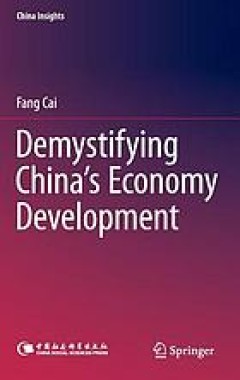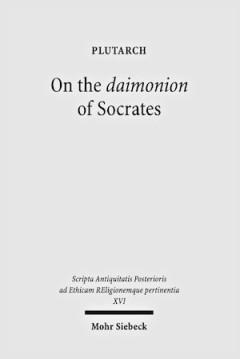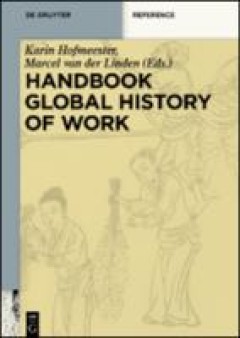Filter by

Fragmenting Modernism : Ford Madox Ford, the Novel and the Great War
Fragmenting Modernism is about Ford Madox Ford, a hero of the modernist literary revolution. Ford is a fascinating and fundamental figure of the time; not only because as a friend and critic of Ezra Pound and Joseph Conrad, editor of the English Review and author of The Good Soldier, he shaped the development of literary modernism. But as the grandson of Ford Madox Brown, and son of a German mu…
- Edition
- -
- ISBN/ISSN
- 9780719060557
- Collation
- -
- Series Title
- -
- Call Number
- 920 HAS f

Cross-Cultural Management and Quality Performance Chinese Construction Firms …
This book explores China?s global competitiveness in the building of infrastructures with a particular interest in the resource-rich African countries. The book begins with a comprehensive literature review on total quality management (TQM) and national culture, followed by reviews of the construction industries in China and Nigeria. This provides better understanding of the linkages between TQ…
- Edition
- 1
- ISBN/ISSN
- 9789812873620
- Collation
- XIX, 462
- Series Title
- -
- Call Number
- 951

Demystifying China’s Economy Development
This book explains why China's opening-up policy can boost the rapid growth of its economy. Based on concrete facts and economic logic, it offers a brief introduction to the history of China's successful development, which has unprecedentedly helped improve people's lives and community welfare over the past 30 years. In light of the newly emerging problems, the author assesses the different sta…
- Edition
- 1
- ISBN/ISSN
- 9783662461037
- Collation
- VIII, 194
- Series Title
- China Insights
- Call Number
- 951

Debt and distortion : risks and reforms in the Chinese financial system
China's unprecedented growth has transformed the lives of its people and impacted economies across the globe. The financial system supported this growth by providing cheap loans to boost investment and, in a virtuous cycle, rapid growth insured that these loans could be repaid. However, in recent years, this virtuous cycle has turned vicious. The financial system has continued to lend freely an…
- Edition
- 1
- ISBN/ISSN
- 9781137534019
- Collation
- XVIII, 270
- Series Title
- -
- Call Number
- 951

Designing Pilot Projects as Boundary Objects A Brazilian Case Study in the Pr…
This book describes a collaborative Design Pilot Project held in Brazil (called MODU. Lares) involving micro and small enterprises and other actors in the furniture sector. The experience was based on an action research method and evaluated by using a tool, in order to assess the value of pilot project as a boundary object capable of fostering innovation and sustainability. The impact of the De…
- Edition
- 1
- ISBN/ISSN
- 9783319231419
- Collation
- XIV, 112
- Series Title
- SpringerBriefs in Applied Sciences and Technology
- Call Number
- 981

Digital methods and remote sensing in archaeology : archaeology in the age of…
This volume debuts the new scope of Remote Sensing, which was first defined as the analysis of data collected by sensors that were not in physical contact with the objects under investigation (using cameras, scanners, and radar systems operating from spaceborne or airborne platforms). A wider characterization is now possible: Remote Sensing can be any non-destructive approach to viewing the bur…
- Edition
- 1
- ISBN/ISSN
- 9783319406589
- Collation
- XIX, 496
- Series Title
- Quantitative Methods in the Humanities and Social Sciences
- Call Number
- 930.1

On the daimonion of Socrates : Plutarch
Plutarch's dialogue On the daimonion of Socrates is a unique combination of exciting historical romance and serious philosophical and religious discussion. The volume offers a range of essays on themes providing further insights into this masterly literary piece: on the historical, religious and philosophical background and on thematic connections with other works by Plutarch
- Edition
- -
- ISBN/ISSN
- 9783161501388
- Collation
- -
- Series Title
- SAPERE
- Call Number
- 900 DAI

Dryland Forests : management and social diversity in Africa and Asia
This volume provides new insights and conceptual understandings of the human and gender dimension of vulnerability in relation to the dynamics of tenure reforms in the dryland forests of Asia and Africa. The book analyzes the interaction between biophysical factors such as climate variability (e.g. droughts) with socio-political processes (e.g. new institutions and authority) and gender dimensi…
- Edition
- 1
- ISBN/ISSN
- 9783319194059
- Collation
- XXIII, 167
- Series Title
- -
- Call Number
- 960

State and Crafts in the Qing Dynasty (1644-1911)
This book, full of quantitative evidence and limited-circulation archives, details manufacturing and the beginnings of industrialisation in China from 1644 to 1911. It thoroughly examines the interior organisation of public craft production and the complementary activities of the private sector. It offers detailed knowledge of shipbuilding and printing. Moreover, it contributes to the research …
- Edition
- -
- ISBN/ISSN
- 9789048537938
- Collation
- 402 pages
- Series Title
- Social Histories of Work in Asia
- Call Number
- 900

Handbook Global History of Work
What is the day-to-day reality for workers in various parts of the world, and how was it in the past? How do they work today, and how did they work in the past? Did workers ever protest? If so, how? These and many other questions comprise the field of the global history of work – a young discipline that is introduced with this handbook.
- Edition
- -
- ISBN/ISSN
- 9783110424584,
- Collation
- 604 pages
- Series Title
- De Gruyter Reference
- Call Number
- 900
 Computer Science, Information & General Works
Computer Science, Information & General Works  Philosophy & Psychology
Philosophy & Psychology  Religion
Religion  Social Sciences
Social Sciences  Language
Language  Pure Science
Pure Science  Applied Sciences
Applied Sciences  Art & Recreation
Art & Recreation  Literature
Literature  History & Geography
History & Geography